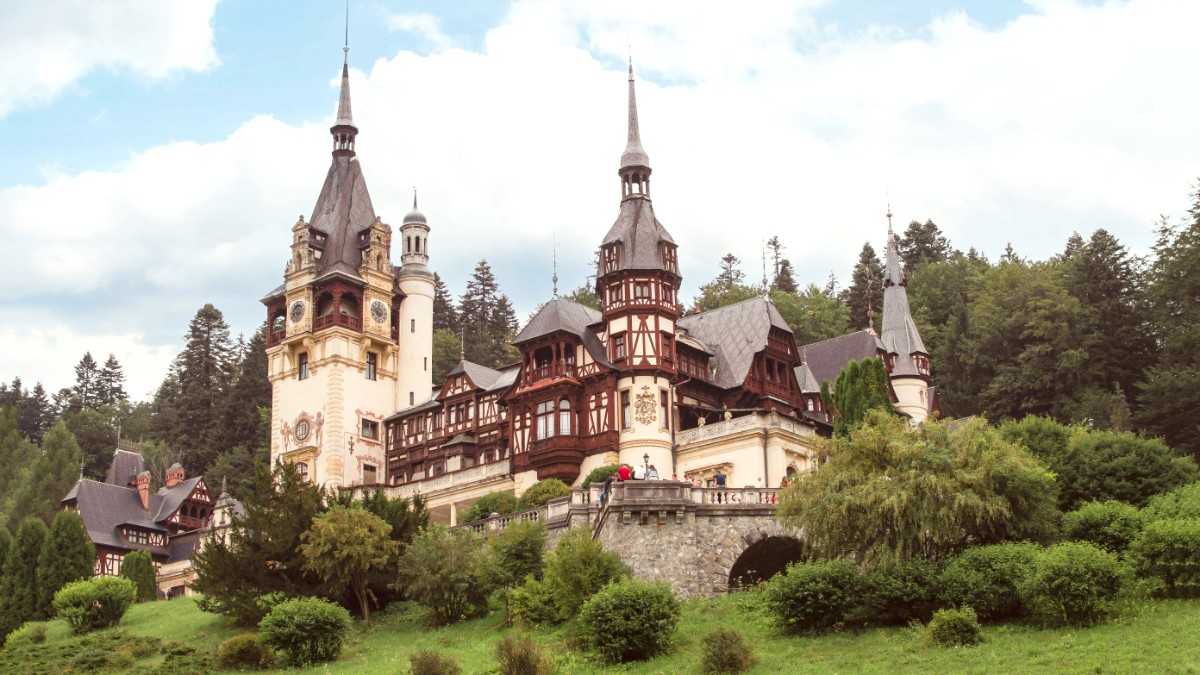
Transylvania, Romania
Romanian cuisine presents a robust and flavorful blend of influences. It draws from Ottoman, Austro-Hungarian, and Slavic traditions, creating an unique culinary identity. Mountainous regions like Sinaia emphasize stews, grilled meats, and warming, substantial dishes.
Garlic, onion, paprika, dill, and parsley are common. Sour cream (smântână) and polenta (mămăligă) are staples. Pickled vegetables are frequent side dishes.
Sinaia mainly serves general Romanian cuisine, with strong Transylvanian and Muntenian influences. Expect robust, warming dishes and generous portions.
Wait to be seated. Tipping, usually 10% for good service, is appreciated if not already included. Hear "Poftă bună!" (Bon appétit!) before a meal. Toast with "Noroc!" (Good luck!) for alcoholic beverages.
Polenta served with salted cheese and a dollop of sour cream. A staple, either as a side or main dish.
Find it in any traditional Romanian restaurant.
Cabbage rolls filled with minced meat (pork and rice), simmered in tomato sauce. A national dish.
Available in nearly every traditional eatery.
Grilled, skinless sausages of ground meats and spices. A popular street food.
Feature prominently in casual eateries and outdoor events.
Țuică/Pălincă: Strong plum brandy. Vin (Wine): Local red wines. Bere (Beer): Ursus, Ciuc, Timișoreana.
Socată: Elderflower drink. Apă minerală: Sparkling mineral water. Papanași: Fried/boiled doughnuts with sour cream and jam (a must-try!). Clătite: Crepes with various fillings.
Restaurant Foresta (Ioana Hotels): Refined Romanian and international cuisine in an elegant setting. Restaurant Cota 1400: Panoramic views from the mountain, upscale dining.
Cabana Schiori: Traditional Romanian dishes, rustic ambiance. Restaurant Taverna Sârbului: Serbian-inspired grilled meats, lively atmosphere. Casa Noastră: Traditional Romanian and international fare, comfortable setting.
Kiosks near the train station or Dimitrie Ghica Park sell "covrigi" (pretzels) and pastries. Local "Terase" or "Împinge tava" (cafeteria-style) have quick, affordable meals. Supermarkets for groceries and picnic supplies.
Sinaia has no large, bustling traditional markets. Smaller local shops and delis sell local produce, cheeses, and cured meats. They scatter throughout the town center.
While Sinaia focuses on Romanian cuisine, some restaurants have Italian dishes, pizza, or basic international fare. These are available if you seek a change from traditional Romanian food.
Not commonly offered directly in Sinaia. Find options as day trips from Brașov or Bucharest.
Opportunities for wine/cheese tasting exist in the wider Prahova Valley. Local shops sell regional honey and jams.
Sinaia occasionally hosts local festivals with traditional food and drink, usually in summer or autumn. Check local event listings.
Dining at Cota 1400 (mountain views). Traditional "han" (inn) style restaurants offer rustic charm and hearty mountain dishes.
Use translation apps or pre-prepared cards with phrases in Romanian to explain your dietary needs to restaurant staff.
Example: "Nu mănânc gluten" (I do not eat gluten).
Focus on inherently suitable dishes, like grilled meats (without marinades), salads, or simple vegetable preparations. Supermarkets have a range of products, including some gluten-free items, so self-catering is a reliable option.
While growing, allergy awareness is not universal. Always double-check ingredients, especially in soups and sauces.
Local supermarkets offer fresh produce.
The original template order was adapted to align with content reference structure for a more logical flow.